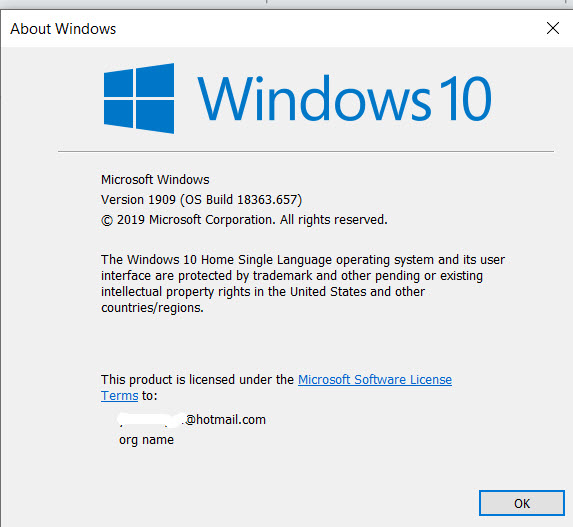
/cdn.vox-cdn.com/imported_assets/1005067/8182.FakeAV3.png)
- Iantivirus forums install#
- Iantivirus forums software#
- Iantivirus forums code#
- Iantivirus forums mac#
Iantivirus forums software#
Trusting software to protect you will only make you more vulnerable. Malware is a problem of human behavior, not machine behavior, and no technological fix alone is going to solve it. The built-in security features of OS X reduce the risk of malware attack, but they are not, and never will be, complete protection. It notifies you if it finds malware, but otherwise there's no user interface to MRT.ĥ.
Iantivirus forums install#
It checks for, and removes, malware that may have evaded the other protections via a Java exploit (see below.) MRT also runs when you install or update the Apple-supplied Java runtime (but not the Oracle runtime.) Like XProtect, MRT is effective against known threats, but not against unknown ones. MRT runs automatically in the background when you update the OS. Starting with OS X 10.8.3, a third layer of protection has been added: a "Malware Removal Tool" (MRT). Never click through any request for authorization without thinking.Ĥ. "Sandboxed" applications may prompt for access to private data, such as your contacts, or for access to the network. Those lapses don't involve App Store products, however.įor the reasons given, App Store products, and-to a lesser extent-other applications recognized by Gatekeeper as signed, are safer than others, but they can't be considered absolutely safe. ☞ An App Store developer could find a way to bypass Apple's oversight, or the oversight could fail due to human error.Īpple has taken far too long to revoke the codesigning certificates of some known abusers, thereby diluting the value of Gatekeeper and the Developer ID program. ☞ A malware attacker could get control of a code-signing certificate under false pretenses, or could simply ignore the consequences of distributing codesigned malware. ☞ It can easily be disabled or overridden by the user. It has, however, the same limitations as XProtect, and in addition the following: Gatekeeper doesn't depend on a database of known malware. That may not mean much if the developer lives in a country with a weak legal system (see below.) His identity is known to Apple, so he could be held legally responsible if he distributed malware. Software certified in this way hasn't been checked for security by Apple unless it comes from the App Store, but you can be reasonably sure that it hasn't been modified by anyone other than the developer. By default, applications and Installer packages downloaded from the network will only run if they're digitally signed by a developer with a certificate issued by Apple. Starting with OS X 10.7.5, there has been a second layer of built-in malware protection, designated " Gatekeeper" by Apple.
Iantivirus forums code#
Security updates to the code of obsolete systems will stop being released at some point, and that may leave them open to other kinds of attack besides malware.ģ. The security of obsolete system versions may eventually be degraded. Software installed from a CD or other media is not checked.Īs new versions of OS X are released, it's not clear whether Apple will indefinitely continue to maintain the XProtect database of older versions such as 10.6.
%2Ffree-bootable-antivirus-tools-2625785-cbcfbfb85cf64535a6c2fbe54efda94a.png)
☞ It only applies to software downloaded from the network. ☞ It can be bypassed by some third-party networking software, such as BitTorrent clients and Java applets. The malware recognition database used by XProtect is automatically updated however, you shouldn't rely on it, because the attackers are always at least a day ahead of the defenders.
Iantivirus forums mac#
All versions of OS X since 10.6.7 have been able to detect known Mac malware in downloaded files, and to block insecure web plugins. OS X now implements three layers of built-in protection specifically against malware, not counting runtime protections such as execute disable, sandboxing, system library randomization, and address space layout randomization that may also guard against other kinds of exploits.Ģ. The key points are in sections 5, 6, and 10. The comment is long because the issue is complex. AV software is not intended to, and does not, defend against such attacks.

That threat is in a different category, and there's no easy way to defend against it. It does not apply to software, such as keystroke loggers, that may be installed deliberately by an intruder who has hands-on access to the computer, or who has been able to take control of it remotely. This is a comment on what you should-and should not-do to protect yourself from malicious software ("malware") that circulates on the Internet and gets onto a computer as an unintended consequence of the user's actions. The usual answer is "no." That answer is right, but it may give the wrong impression that there is no threat from what are loosely called "viruses." There is a threat, and you need to educate yourself about it.ġ. Mac users often ask whether they should install "anti-virus" (AV) software.


 0 kommentar(er)
0 kommentar(er)
